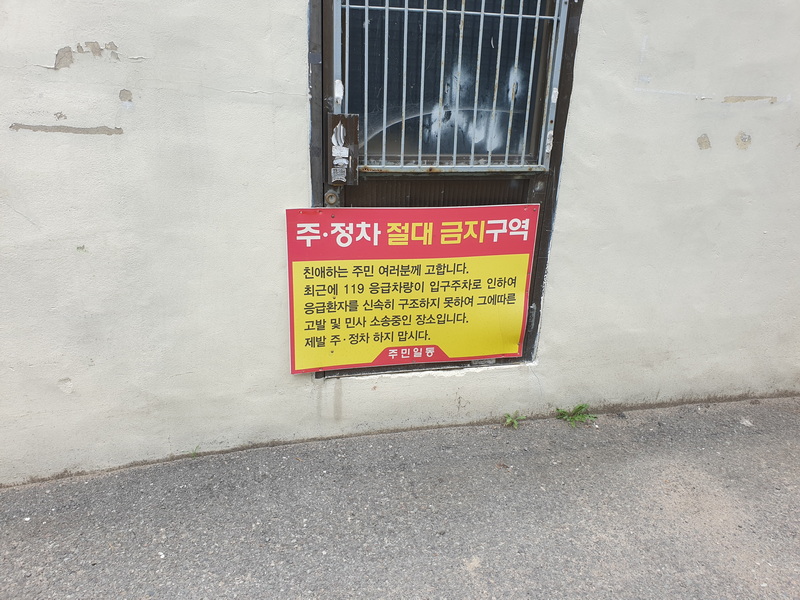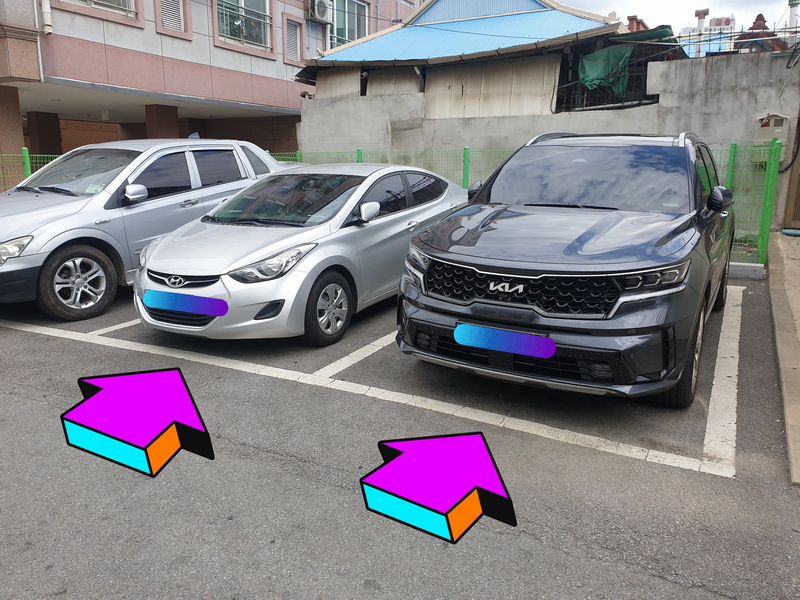What Is a Parking Spot? A Gwangju News Special Investigation
By William Urbanski
The problem of “where to park my car” is one that has perplexed and baffled the greatest minds since the inception of the personal automobile. As of August 2022, there is still no universally agreed-upon answer to this elusive question, resulting in literal pandemonium on streets and roads worldwide, especially in Gwangju. More so than solving the greatest mysteries of physics, medicine, economics, and mathematics, creating a universally agreed-upon answer to the question of where a car can and should be parked is the greatest intellectual challenge facing the world, and by extension, the city of Gwangju, today.
Essential Definitions
A “car” is basically a large steel box with four wheels that quickly carries people along a flat surface called a “road.” “Cars” do move quite quickly most of the time, but occasionally the person controlling the car (called a “driver”) must stop and exit the vehicle. The verb that describes this cluster of actions (i.e., stopping and exiting a car) is “to park.” The simplest and most convenient place to park is, obviously, in the middle of a road, but doing so creates a dangerous problem. Other cars that are moving quickly (sometimes as fast as 50 km/h!), risk colliding into the non-moving car. Even in the best-case scenario, a car that parks on a road can prevent other cars from driving on the road.
One possible solution to the safety hazard created by cars parking on the road is a bold and radical pilot project currently underway all over Gwangju and other parts of the world. According to this scheme, certain areas become specially designated places where a driver can stop his or her vehicle and then exit it safely with minimal risk of causing a collision or inconvenience to others. These specially designated places are called “parking spots.”
In short, a “parking spot” is any place where it is OK to stop, exit, and leave a vehicle unattended. But, and this is the tricky part, not every place a driver stops automatically becomes a parking spot. By using all their available critical thinking skills, anyone with the intelligence to chew a stick of gum or tie their own shoelaces can learn to effectively identify and utilize these so-called “parking spots,” which have already begun to pop up all over Gwangju.
How to Identify a Parking Spot
In a sense, a “parking spot” is more of an intellectual construct than a physical place. That being said, there are physical things that indicate where one may be found. The first thing to look for is that, generally speaking, a parking spot is delineated by solid white lines, each approximately fifteen centimeters in width, that have been painted on the ground. These lines create a rectangle pattern roughly the size of an automobile. Sometimes, there are only three lines (usually two long ones and one short one that connects them on the end), so it is necessary to use one’s full power of visualization to imagine that the fourth line is there. In even more specialized cases, there may only be two short horizontal lines. The main takeaway is that in the vast majority of cases, lines that suggest a large rectangle shape indicate a parking spot.

The second telltale sign of a parking spot is some kind of sign or marking that says something along the lines of “this is a parking spot,” “it is OK to park here,” or “you may park here.”
Something that also exists in some high-density areas are large, flat areas with many of these so-called parking spots clustered together. These are called “parking lots.” Now, just because a driver enters a parking lot, it is important to remember that a driver may not just park anywhere he or she pleases. The idea is that the driver should choose an unoccupied spot and park their car between the white lines mentioned above.
While doing research for this article, an uncomfortable truth was uncovered about parking lots in Gwangju: In many cases, a person must pay a fee of about one thousand won per hour to park in a parking lot. One thousand won is a tidy sum, even considering that a car generally costs twenty-thousand times that. Paying for parking anywhere may seem like an unreasonable miscarriage of justice and a violation of one’s God-given right to park wherever one pleases, but it is simply part of the cost of operating a motor vehicle, particularly for those who wish for their cars to be safe when they are out and about.
Why Should Cars Park in Parking Spots?
Besides the risk of collision with cars that use roads for, you know, driving, as well as ensuring that pedestrians (especially the elderly and handicapped) can walk freely where they should be allowed to, there is a huge reason – one that transcends that pesky notion of “inconvenience for others” – why drivers should only park in designated parking spaces. The reason is that if there is a fire or other emergency, emergency vehicles might have to actually access a building or home pretty quickly. So, whenever a driver parks, if nothing else, he or she should ask, “Could my vehicle potentially block a firetruck or ambulance while I’m sitting in a café drinking ice coffee and playing with my smartphone?”
Part Two (and Beyond?)
Now that we have looked at what parking spots are and why we should use them, in the next article, we will turn our attention to certain places where drivers should never park their cars, with a special emphasis on sidewalks and crosswalks. Spoiler alert: Sidewalks and crosswalks are not parking spots.
This parking spot pilot project will most likely take many years to catch on. Even if the concept of a “parking spot” never fully penetrates the collective consciousness, it is encouraging to see that civil engineers and city planners worldwide are trying to find places where people can park their cars without causing massive inconvenience to others as well as risking public safety. Kudos!
Photograph by William Urbanski.
The Author
William Urbanski is the managing editor of the Gwangju News. When he drives, he keeps his hands on the wheel and his eyes on the road. Instagram: @will_il_gatto





